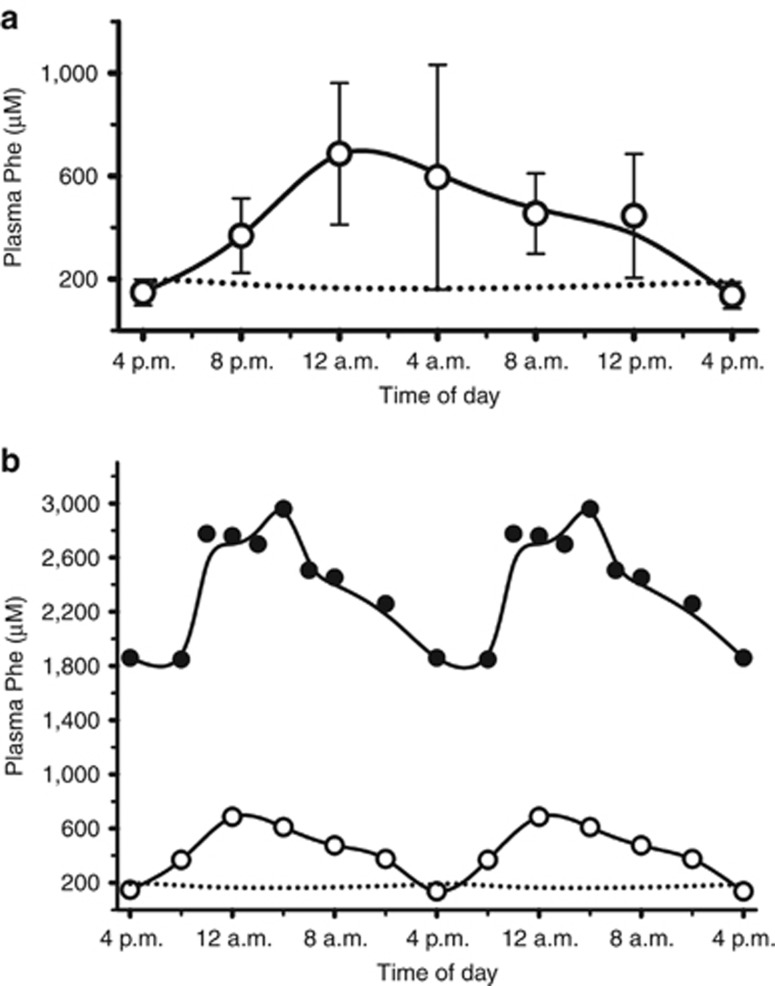Figure 3.
Diurnal variation in plasma phenylalanine (Phe) levels of pegvaliase-treated phenylketonuria (PKU) mice. (a) Female PKU mice (Study 09-068b) received daily subcutaneous injections of 6 mg/kg pegvaliase at 4 PM. In addition to the normal 4 PM baseline samples, additional blood samples were drawn at 4 h intervals over a 10-week period to determine Phe levels throughout the light–dark cycle. Two plasma Phe values per animal per time point were averaged to create the 24 h composite profile (○) shown in the figure. Pharmacodynamic modeling (▪▪▪▪) gives an excellent match to the baseline 4 PM Phe values, but dietary intake results in a significant rise in plasma Phe that modeling does not simulate. (b) Two 24 h cycles of the composite data for untreated PKU female mice (•), from Figure 2, superimposed on two 24 h cycles of the 6 mg/kg daily dose (○) composite data from (a). There is excellent correspondence between dietary intake in untreated PKU mice and the pegvaliase-treated PKU mice, with marked, if incomplete, damping of the 1 mM nightly increase seen in untreated animals.

